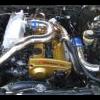Taking The Challenge Of The Greddy Copy Plenum :)
Announcements
-
Similar Content
-
Latest Posts
-
lol that would explain it
-
I assume you’re talking about the Daihatsu Cuore with the “Mira Gino” front end conversion if so it’s also turbo converted and makes ~100kw from the 1.0L 3cyl
-
By TurboTapin · Posted
Head is completely built. I tossed the entire Ferrea catalogue at it. Head has also had a lot of porting work done to it. When I see someone making 600+kw with a hydro s1 head in the rb25 turbo thread here, I like to presume it's not a head/rpm limitation. Although I agree, it would definetely help. 82mm bosch dbw, 4" core with 3" pipes. IAT's were ice cold on the dyno. It was 18c ambient and i'm shooting water/meth. -
I thought the K11 Micra front end conversion was pretty shmick
-
By TurboTapin · Posted
I'm confirming the "2 way" Nismos can be converted to 1.5's very easily as you already described. It's well detailed in the manual. I can scan mine if you need, I think I still have it laying around somewhere.
-






Recommended Posts
Create an account or sign in to comment
You need to be a member in order to leave a comment
Create an account
Sign up for a new account in our community. It's easy!
Register a new accountSign in
Already have an account? Sign in here.
Sign In Now